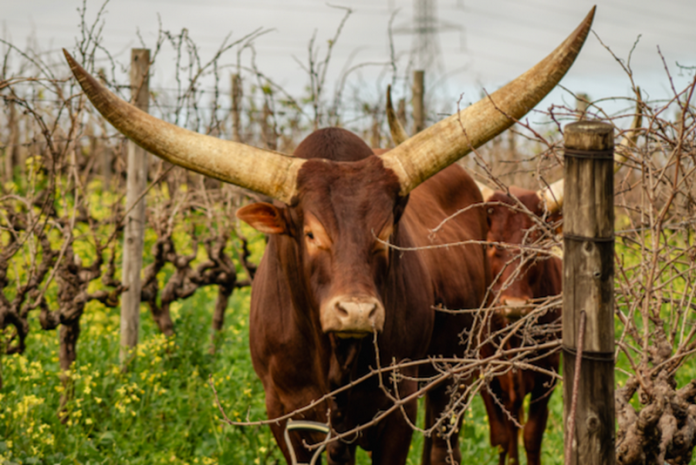
In the heart of Stellenbosch, something quietly revolutionary is happening among the grapevines. A research project called ReGenWine is changing the way we think about farming, sustainability, and the land beneath our feet—by simply letting nature lead.
Launched in 2025 and led by Stellenbosch University, ReGenWine explores how regenerative farming can make wine production not just more sustainable, but truly restorative. Think cover crops, composting, and even cattle grazing between the vines. It’s farming that gives back.
Farming with Nature, Not Chemicals
Instead of fighting weeds and pests with chemicals, the ReGenWine approach embraces nature’s own systems. Between the rows of vines, cover crops like oats and grasses are planted to retain moisture, prevent erosion, and boost biodiversity. After harvest, Dexter cattle—a small, vineyard-suited breed—graze the crops and fertilise the soil naturally with their manure.
“We’ve seen the land come alive,” says Wilhelm Joubert, viticulturist at Hartenberg Wine Estate, the project’s main site. “Earthworms, dung beetles, and microbes are returning in ways we haven’t seen for years.”
A Healthier Ecosystem—and Better Wine?
This isn’t just about soil. By restoring the ecosystem, ReGenWine is also enhancing the resilience of the vines, improving grape quality, and reducing the need for expensive synthetic inputs. The cattle contribute even further—providing potential secondary income through meat production or estate restaurants.
It’s a closed-loop system, where nothing goes to waste and every part of the process serves the whole.
Backed by Science, Built for the Future
What sets ReGenWine apart is its scientific backbone. Five research teams at Stellenbosch University are measuring everything from carbon levels in the soil, to vine health, juice quality, and economic viability.
The goal? To prove that regenerative wine farming isn’t just a nice idea—it’s a practical, measurable way to protect the land and improve livelihoods.
According to project lead Professor Melané Vivier, “We’re building something that goes beyond one estate. This is about creating a model for an industry ready to evolve.”
Conservation Where You Least Expect It
When we think of conservation, we often picture game reserves and untouched forests. But in truth, some of the most critical conservation work is happening on working land—on farms, in vineyards, and in the places where nature meets people.
The ReGenWine project shows that conservation doesn’t have to mean separation. It can live right in the spaces where we grow, eat, and enjoy. Restoring soil health, protecting biodiversity, and reducing chemical use are all forms of conservation that begin with mindful farming.
Rooted in the Past, Ready for the Future
Hartenberg Wine Estate began its regenerative journey in 2017. With ReGenWine now in full swing, the estate has become the first in South Africa to be verified under the Ecological Outcome Verification (EOV) framework—recognising tangible, nature-positive results.
It’s a hopeful sign that change is not only possible—it’s already growing. One cover crop, one paw print, one vineyard at a time.

